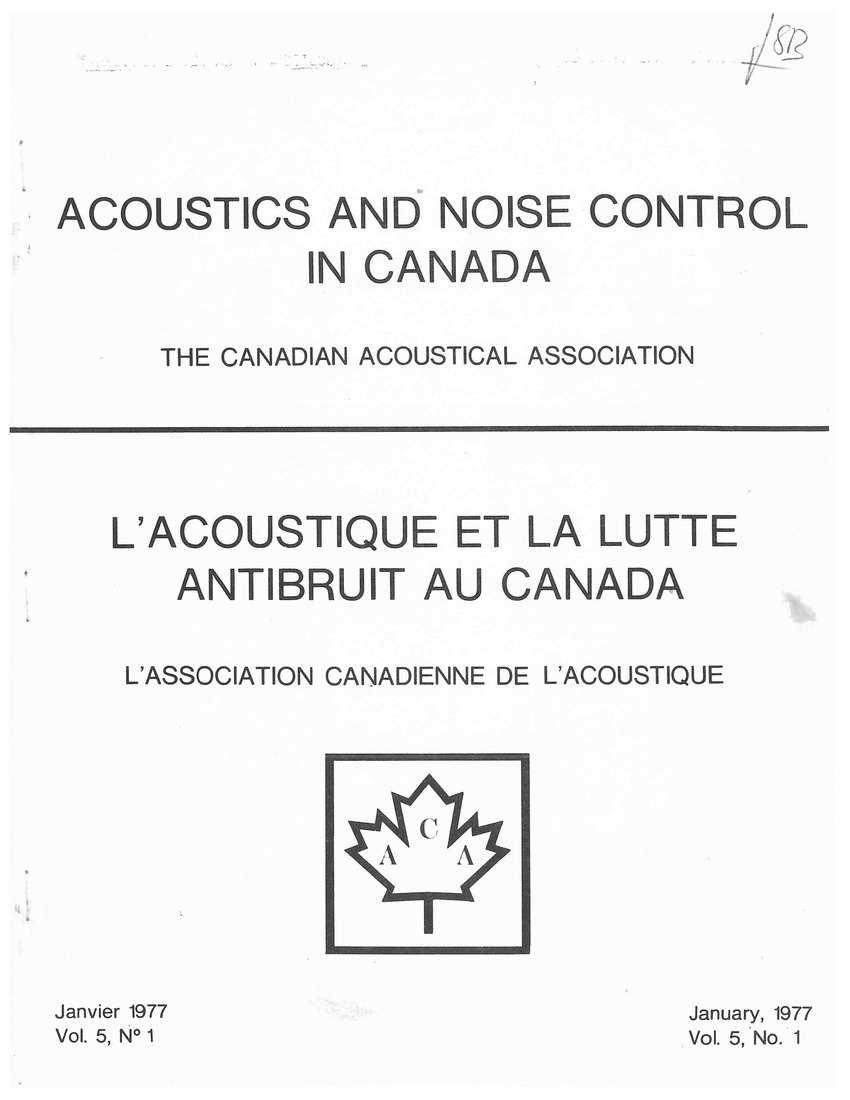Noise - The Third Pollution: Suggested Guidelines for Action Now
Abstract
One of the things that sets man ahead of other animals is that he is supposed to learn faster from his mistakes. In the case of the first two pollutions, those of air and water, premature regulations enforced by Governments caused a waste of millions of dollars because new technologies with more positive, more economic solutions were on the horizon. Perhaps in recognition of this, Governments in the United States and Canada appear bogged down in coming to grips with firm regulations on noise. None of us, I am sure, would like to repeat the classic errors of the automotive industry that: - reduced some pollutants to within limits, but simultaneously introduced new toxics at the same time, and also greatly increased our consumption of dwindling petroleum. Lo and behold! We now have broken new frontiers with lean-burn engines and smaller cars which are economic logical answers to thinking citizens who recognize that we live beyond our energy supply. In spite of squabbles over: - 85 dBA vs 90 dBA, all known technology applied against practical technology, administrative controls or not, economic impact against union demands for removal of the need for hearing protection regardless of cost; industry must continue to move toward prevention of noise induced hearing loss of its employees by enforcement of hearing protectors and the elimination of noise in a logical economically feasible manner.Additional Files
Published
How to Cite
Issue
Section
License
Author Licensing Addendum
This Licensing Addendum ("Addendum") is entered into between the undersigned Author(s) and Canadian Acoustics journal published by the Canadian Acoustical Association (hereinafter referred to as the "Publisher"). The Author(s) and the Publisher agree as follows:
-
Retained Rights: The Author(s) retain(s) the following rights:
- The right to reproduce, distribute, and publicly display the Work on the Author's personal website or the website of the Author's institution.
- The right to use the Work in the Author's teaching activities and presentations.
- The right to include the Work in a compilation for the Author's personal use, not for sale.
-
Grant of License: The Author(s) grant(s) to the Publisher a worldwide exclusive license to publish, reproduce, distribute, and display the Work in Canadian Acoustics and any other formats and media deemed appropriate by the Publisher.
-
Attribution: The Publisher agrees to include proper attribution to the Author(s) in all publications and reproductions of the Work.
-
No Conflict: This Addendum is intended to be in harmony with, and not in conflict with, the terms and conditions of the original agreement entered into between the Author(s) and the Publisher.
-
Copyright Clause: Copyright on articles is held by the Author(s). The corresponding Author has the right to grant on behalf of all Authors and does grant on behalf of all Authors, a worldwide exclusive license to the Publisher and its licensees in perpetuity, in all forms, formats, and media (whether known now or created in the future), including but not limited to the rights to publish, reproduce, distribute, display, store, translate, create adaptations, reprints, include within collections, and create summaries, extracts, and/or abstracts of the Contribution.


